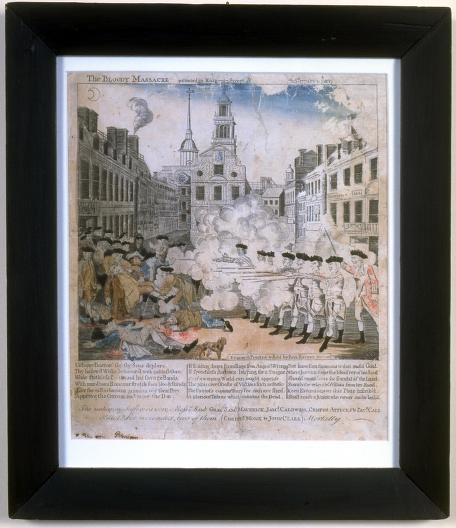




Advanced Search
This theme in other eras: 1680-1720 | 1780-1820 | 1880-1920
|
Were it not for his role in the Boston Massacre, most people would likely never have heard of Crispus Attucks. Attucks was a former slave who had escaped from a master in Framingham, Massachusetts, in 1750. He was both African American and Native American, of the Natick group. Attucks, whose name in the Natick language means deer, came to Boston and joined the many free Blacks and Native Americans working in the maritime trades. The urban setting and large numbers of people of color working on the docks offered a welcome degree of anonymity to fugitives like Attucks. Tall and powerfully built, Attucks worked for the next twenty years as a sailor, often using the name Michael Johnson as an alias.
|
Engraving "The Bloody Massacre perpetrated on King Street, Boston on March 5th, 1770"
|
| |
Home | Online Collection | Things
To Do | Turns
Exhibit | Classroom | Chronologies | My
Collection
About This Site | Site Index | Site Search | Feedback
